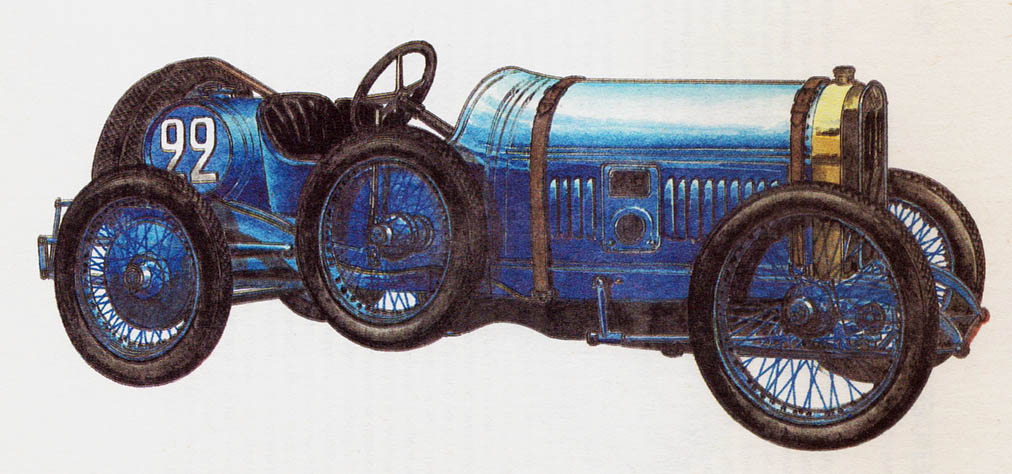PEUGEOT – year 1913
Peugeot Cars and Cycles SA, Audincourt, France.
The most serious favorites of the ACF Grand Prix in 1912 of the year were Fiat and Peugeot cars. Fiat showed great capacity and power, while Peugeot, beginners at Grand Prix races, came up with a new lightweight proposal, a reliable racing car with good driving characteristics. Model z 1912 year was constructed by Swiss engineer Ernest Henry following the instructions of Boillot's players, Zuccarellego and Gouxa. The engine was especially interesting - for the first time with a timing gear 2 x OHC (two camshafts in the cylinder head, driving four valves in each cylinder). Thanks to the use of almost twice the stroke of the piston (200 mm) at the cylinder diameter (110 mm) displacement reached 7596 cm3 and power 95,6 kW (130 KM) by 2200 RPM. The car reached speed at maximum revs 147 km/h.

Peugeot Cars and Cycles SA, Audincourt, France.
Grand Prix ACF racing in 1913 years on the track in Amiens no longer followed the free formula. The new regulations limited fuel consumption to 20 1/100 km, and the weight of vehicles from 800 do 1100 kg. A two-seater body was required, cylinder-shaped fuel tank with a length 1 m located behind the seats without aerodynamic protection. The Peugeot company presented vehicles similar in terms of concept and appearance to the proven z 1912 year, and only the engine was modified. The diameter of the cylinders was reduced to 100 mm, and the stroke length to 180 mm, as a result, the total engine capacity decreased to 5645 cm3. Despite the reduction in total power to 84,6 kW (115 KM) by 2500 RPM, so-called. power from displacement 1 liter increased from 12,6 kW/l up to 15 kW / l. The sixteen-valve engine had a dry crankcase and a crankshaft packed in ball bearings. The magnetoelectric ignition was from the Bosch company. Rigid bridges were suspended on semi-eliptical leaf springs. Both brakes - manual acting on the drive shaft, so-called. Cardan shaft” and the caliper foot operated only on the rear wheels. The Rudge-Whitworth interchangeable wheels already had the characteristic wings on the central nuts for quick release and hammer tightening. The vehicle reached a maximum speed of approx 170 km/h, and Boillot covered the course at an average speed during the Grand Prix races 116 km/h. His teammate Goux reached the finish line right behind him. After the competition, the Peugeot vehicles were sold to America and no longer competed in the French Grand Prix at Le Mans.